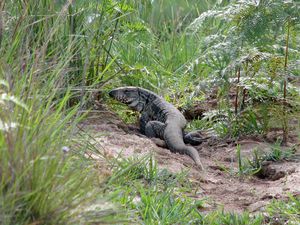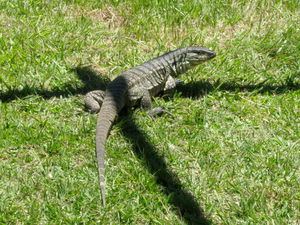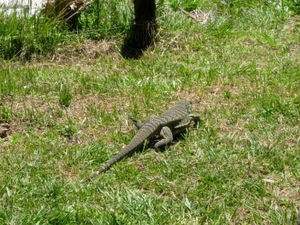Lagarto Tejú
The Lagarto Tejú, Argentine black and white tegu or Tupinambis merianae, is the largest species of tegu. It is also known as the Argentine giant tegu. It belongs to the teiid family. They are an omnivorous terrestrial species that inhabit the tropical rain forests, savannas and semideserts of east and central South America. Just as many other reptiles, Argentine Tegus will go into brumation (a form of hibernation) in autumn when the temperature drops.
A level of intelligence unusually high for reptiles has been observed, along with a high level of physical activity during the wakeful period of the year. It is believed that individuals of this species sometimes actively seek human attention, as would for example a cat or dog. Argentine tegus make good pets, as they have a tendency to become attached to their owners and are generally quite docile as adults. A well cared for animal will live for 15 to 20 years in the wild, and possibly even longer in captivity.
Tegus are omnivorous lizards. In the wild, juvenile Argentine tegus have been observed eating a diet consisting primarily of insects, spiders, and wild fruits and seeds. As tegus outgrow their juvenile state they begin to move towards a higher protein diet frequently scavenging eggs from other reptiles, and even eating small birds. However, even adult Argentine tegus continue eating insects and wild fruits as they grow older as these foods hold essential nutrients to the tegu.

|

|

|







